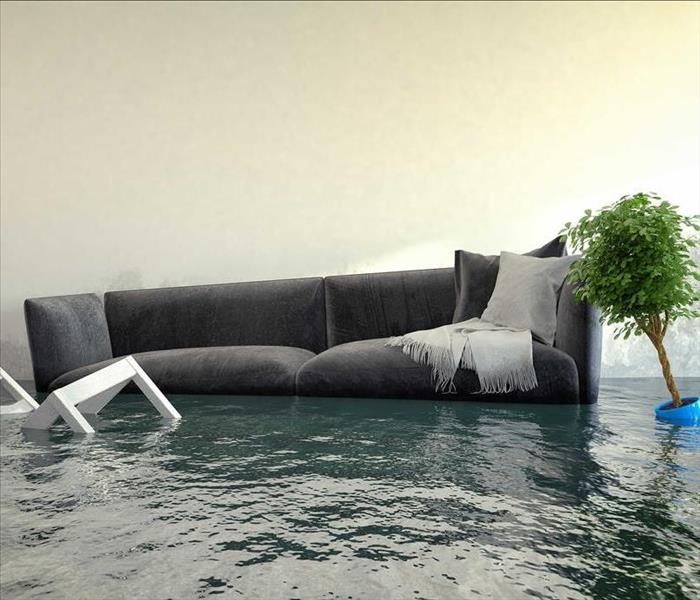Flood Safety Tips Before, During and After the Storm
5/26/2022 (Permalink)
A severe storm in North St. Paul, MN, has the potential to create flash floods and underground flooding. When that happens, flood safety is essential to weathering the storm. While flooding may create chaos, there are ways to help you handle the situation before it hits, as the waters rise and once the floodwaters diminish.
Flood Prevention Before the Storm
Although there is no way to completely flood-proof your home, there are ways to minimize the potential damage. Those include:
- If the home doesn’t already have it, installing backflow valves helps reduce the chances of sewer lines backing up. A sump pump is another alternative that works to keep water from rising.
- For homes in areas prone to flooding, consider investing in flood barrier systems or keeping sandbags on hand. Many of these new systems easily inflate and deflate.
- Appliances in the basement should be elevated and anchored to keep them above any potential standing water.
- Landscaping plays a key role in how the waters flow away from the home. Ensuring the grading is sloped and planting moisture-seeking vegetation may help ease the runoff and reduce soil erosion, which may lead to foundation issues.
- Flood detection devices are available that detect any unwanted moisture. Many on the market can easily be used with other smart devices.
- Any vital documents or memorabilia should never be stored in the basement. Moving it to a higher floor increases the chances of them avoiding water damage.
- As part of regular maintenance, ensure that gutters are clean, trees are trimmed and the foundation shows no signs of cracks.
Flood Safety During the Storm
As the waters start to rise, safely navigating the storm is the top priority. The below safety tips are essential to follow:
- Ensure the utilities are turned off at the main switch.
- Fill sinks and bathtubs with fresh water to avoid dealing with contaminated water.
- Avoid driving and walking through floodwaters. Even six inches of water has the potential to make you lose control of the vehicle or whisk you away.
- If traveling during the storm, leave the vehicle and get to higher ground. Be sure to watch out for any power lines that are down.
Call the Professionals After the Storm
After the storm subsides, it can feel overwhelming. Taking the steps below makes it easier to navigate the aftermath.
Ensure the home is safe before re-entering. This includes avoiding using electricity until it is deemed safe.
Inspect the home for damage, including structural damage.
Take videos and photos of all the damage and file a claim.
Once your insurance provider gives the go-ahead, starting the water extraction and drying processes are vital to minimizing the chances of secondary damage, such as mold growth.
Call a certified flood damage restoration company to help with the cleanup and recovery. The right company will be able to provide beginning-to-end services, from boarding up broken windows to replacing drywall and more.
During severe weather, flood safety should be the only priority. Before and after the storm, consider the above tips to help minimize damage and recover more quickly.

 24/7 Emergency Service
24/7 Emergency Service
